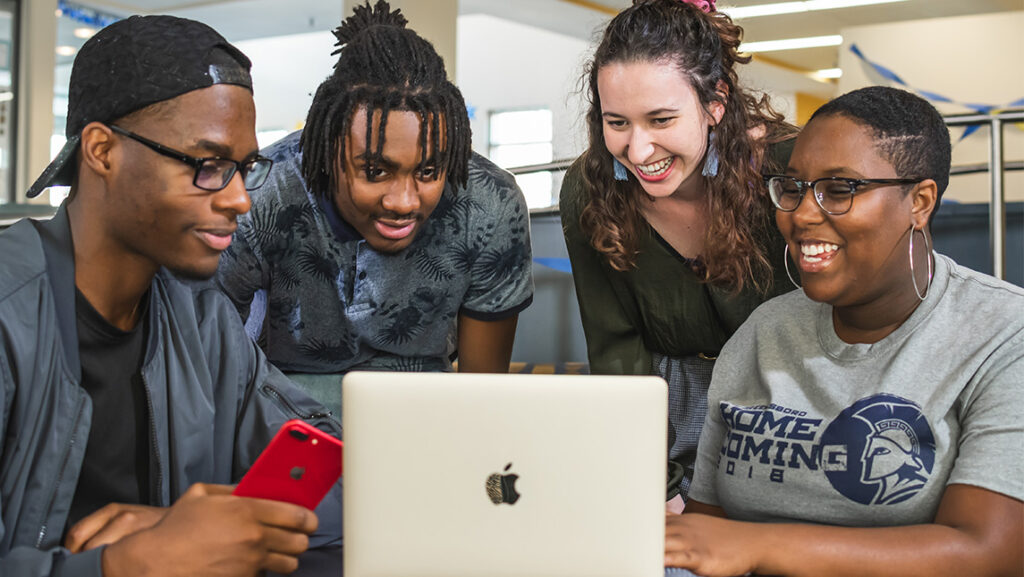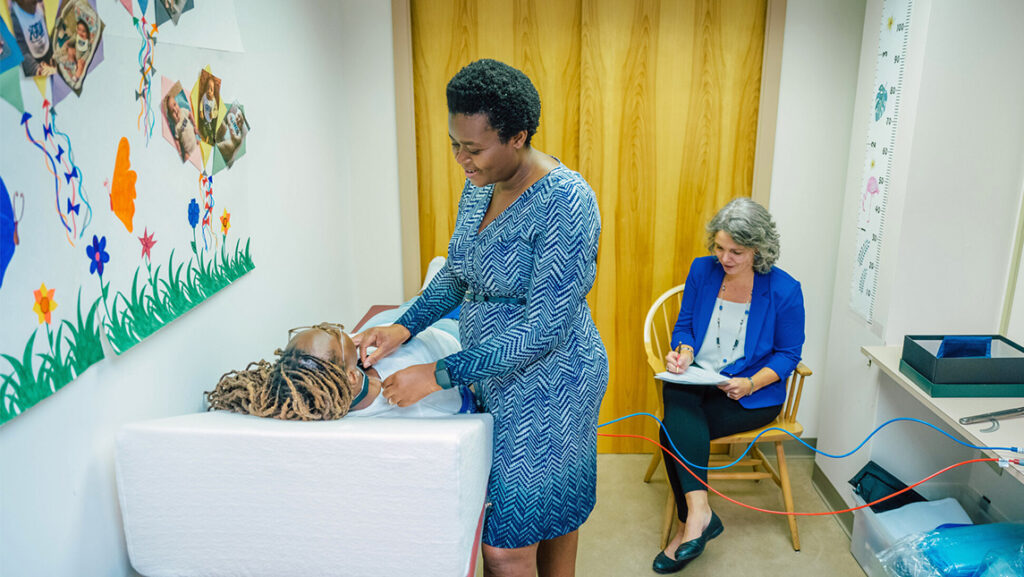Aidan Lytle has been interested in physics – “the purest science,” he says – since he was a kid.
But a less-than-stellar academic record meant, instead of pursuing science, he initially focused on another passion – music.
That talent led him to playing in a battle of the bands at Carnegie Hall at 16, to the UNC School of the Arts, and, finally, to a full scholarship at UNC Greensboro.
Circumstances derailed his musical education, though. He ended up working, doing stints as an EMT, bike mechanic, and U.S. Marine, among other things.
Becoming a Marine Corps avionics technician rekindled his interest in science and math. He was soon teaching himself calculus with the help of YouTube videos.
“I enjoyed it more doing it myself,” he says.
After the Marine Corps, the GI Bill funded a return to his first love – physics. Back at UNCG, he’s applied a laser-like focus to his goal of going to graduate school and becoming a physicist. That includes getting undergraduate research experience.
“I wanted to be contributing to the field.”
In year one, he worked with Professor Anatoly Miroshnichenko to analyze image data from certain types of stars, a project supported by a UNCG Undergraduate Research, Scholarship, and Creativity award. Working with multiple faculty, he learned the coding necessary to process the astronomical data. A year later, he presented his findings at the University’s undergraduate research expo.
In 2019, Lytle also started working with UNCG’s Dr. Ron Belmont, an expert in high-energy nuclear physics. Lytle is helping write software that analyzes heavy-ion collisions to better understand the fundamental nature of matter.
In heavy-ion collisions, gold atoms – stripped of their electrons and smashed together at nearly the speed of light – melt into a plasma of quarks and gluons, the fundamental particles that form the neutrons and protons in the atom’s nucleus.
“It’s like throwing two balls of springs at each other so hard that they explode outward,” Lytle says.
The quark-gluon plasma behaves like a liquid, and the software Lytle and Belmont are working on will help analyze its shape and flow.
The plasma is the same stuff researchers believe the early universe – less than a second after the Big Bang – was composed of.
“We know how atoms work, more or less,” Lytle says. “We don’t know how this works.”
Lytle, who’s also an officer in UNCG’s Society of Physics Students, is enthusiastic about the opportunities in the physics and astronomy department. “There are all these resources,” he says. “I have a couple of side projects, like working on a fuser – a basic nuclear engineering project.”
“It’s what you make of it,“ he adds.
“And I have a very broad range of interests.”
This post originally appeared in UNCG Research Magazine. To read other stories about research, scholarship, and creative activity, visit researchmagazine.uncg.edu.
Story by Mark Tosczak
Photography by Martin W. Kane, University Communications



